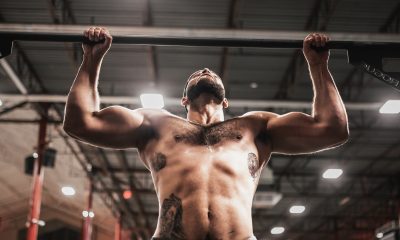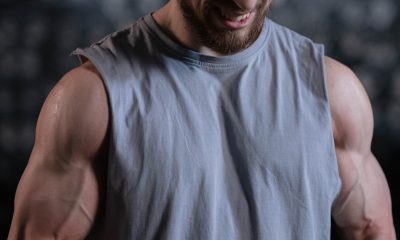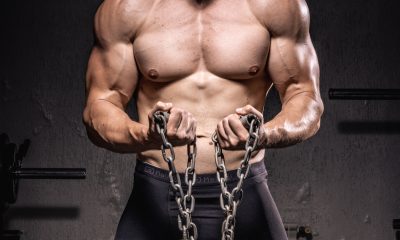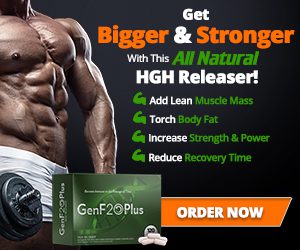Workout
How to Do Bodybuilding Above 50 years Age
Numerous people more than 50, surrender the thought of beginning on a muscle-building program. However, Bodybuilding Above 50 years at this age, quality, and wellbeing are significantly more imperative. As you get older, you might begin to trust that you are 'past your prime' similarly as muscle building is concerned. The normal anabolic hormones in the body are beginning to back off. This is simply going to make it increasingly hard to pick up the incline mass you're searching for.
Bodybuilding Above 50 years Age
Now and again, people who are more than 50 might desert. The point of view of beginning on a muscle-building program completely. Choosing rather center their endeavors on something else in life where they think they will stand a superior chance for achievement.
This is awful on the grounds that, in spite of the way that your body is becoming older. There are still a lot of things that you can do to take your body to the following level. Adding incline muscle mass to your casing as of right now in your life could be much more advantageous than somebody who is in their mid-20s or 30s since feel aside. That muscle is going to offer you some assistance with maintaining a dynamic way of life into the last years.
People more than 50 do ordinarily see a sensational drop in incline muscle mass unless quality preparing workouts are being performed, so it's crucial that regardless of the possibility that you have never weight lifted, you now take an ideal opportunity to begin doing as such.
Must Read: Weight Training According To Your Body Type
Best Steps to follow
- Training time is frequently restricted on account of work and family commitments. Notwithstanding, this might be something to be thankful for. You are less inclined to overtrain via preparing time after time or with an excess of sets and reps.
- Injuries – any individual who has been preparing for the majority of their life has gathered different wounds that meddle with their workout. My own rundown incorporates lower back and elbow wounds for quite a long time, which are presently practically alright. Current issues incorporate ligament knees, shoulders (counting a complete shoulder substitution of my left shoulder) and wrist (which at present is my most restricting), alongside shifting degrees of tendinitis. Be that as it may, wounds, similar to restricted time to prepare can really be a gift. You might need to reduce the poundages that you use in specific activities. The reason this is great is that you can truly focus on creating impeccable structure and gradually advance for a drawn-out stretch of time before you hit a level.
- Self-Discipline – frequently enhances with age. We've needed to utilize it for the duration of our lives – in our workouts, as well as, maybe in school, the military, building our own business – indeed; any objective we've accomplished has had self–discipline as a basic segment.

- Patience – the older bodybuilder is no more searching for a brisk fix. He realizes that anything worth accomplishing requires some investment and exertion.
- Knowledge of how his body functions and feels – which practices he can do and which he should make conformity to, or keep away from.
- Realistic desires – he understands his qualities, additionally his constraints. Objectives are key for the more than 50 bodybuilders. Yet not at all like numerous younger bodybuilders has he realized that he is not going to be the following Arnold.
Think of Volume in Respect of The Age:

When you're young, your body can recoup rapidly, in this way it can deal with longer gym sessions. As well as you can perform these sessions all the more much of the time also.
A while ago when you were 30. You might have found that you could go into the gym for a hard workout one day. And be right back in there the beside target another group of body parts. Because of this, younger people are a better fit for taking care of workouts. The body is part of groups and requires numerous gym sessions every week, frequently performed sequentially.
When you begin getting older anyway, you're going to find that you can't recuperate as fast and in the event that you endeavor one workout the day after another was performed, execution might truly endure.
Workout and Bodybuilding Above 50 years
They had 21 subjects with a mean age of 80 years perform 11 weeks of the lower body works out. Eleven of these subjects performed negative work by practicing on a high-drive flighty ergometer. This sort of activity still requires the muscles to contract however requests next to no vitality from the subject. In this manner, this kind of activity is something that most delicate elderly who are at a high danger of falls can endure.
The specialists likewise had another group of 10 subjects endeavors to perform conventional weight preparing for the lower body muscle groups. They performed 10-15 reiterations that were viewed as "simple" and another 6-10 redundancy. That was considered by the subjects to be "troublesome."
After the eleven-week study was finished. The information exhibited that negative work was generally as successful for expanding the muscle fiber cross-sectional zone, enhancements in quality, parity, stair not too bad, and also a diminished danger of fall.
Moreover, since this negative work was respected by the subjects to be easy. It might end up being to be a decent practice answer for the individuals who are to a great degree narrow-minded to work out.
Must Read: Gaining Muscle Past The Age of 40
Last Words:
So don't rush to believe that you can't expand your muscular quality, force, and level of muscularity. With some savvy preparing changes and a decent demeanor. You can truly have any kind of effect by the way you look and feel.
Bodybuilding
Top Video Games for Bodybuilders in 2025

There are several video games that can be great for bodybuilders, combining fitness and fun! Here are some of the best options:
Ring Fit Adventure (Nintendo Switch)
The game uses the Ring-Con and Leg Strap to guide you through various exercises and adventures. It's a fun way to get a full-body workout while playing a game.
Fitness Boxing 2: VR Boxing Remastered (PlayStation VR)
It offers a full-body boxing workout with a variety of punches and combos. It's a great way to improve your fitness while enjoying a virtual boxing experience.
Must Read: Marvel-Inspired Training Clothing on Amazon
Just Dance 2024
This popular dance game gets you moving to the beat with a variety of songs and dance routines. It's a fun way to burn calories and improve your coordination.
Zumba Fitness
Burn It Off (Nintendo Wii): This game offers a fun and energetic Zumba workout, perfect for those who enjoy dancing and want to get a good cardio workout.
Yoga for Beginners
If you're looking for a more relaxing workout, yoga games can help improve flexibility and reduce stress. Many of these games offer guided yoga sessions that you can follow along with.
Gym Tycoon
This game lets you build and manage your own gym, complete with various workout equipment and fitness classes. It's a great way to learn about different exercises and how to create effective workout routines.
The Sims 4: Fitness Stuff Pack
This expansion pack for The Sims 4 adds fitness equipment and activities to the game, allowing you to improve your character's fitness and join the athlete career.
Grand Theft Auto: San Andreas
While not a traditional fitness game, this classic game includes bodybuilding activities that can help your character gain muscle and improve fitness.
Knockout Home Fitness (Nintendo Switch)
This game offers a variety of boxing workouts that can help improve your strength and endurance.
Gym Simulator 24 (PC)
In this simulation game, you can build and manage your own fitness empire, creating workout routines and managing gym equipment.
Let's Get Fit (Nintendo Switch)
This game focuses on pure workouts, allowing you to set programs and follow along with digital trainers for a customized fitness experience.
Beat Saber (VR)
A popular VR game where you slash blocks to the beat of the music, providing an intense full-body workout.
Synth Riders (PlayStation VR)
This game combines freestyle dance and fitness, offering high-tempo tracks and multiplayer modes for a fun and energetic workout.
Yoga Master (PlayStation)
Designed by professional yoga coaches, this game offers a variety of yoga lessons and poses to improve flexibility and reduce stress.
Les Mills Bodycombat (PlayStation VR)
A martial arts-inspired workout game with a range of workout plans and coaching to keep you motivated.
OhShape Ultimate (PlayStation VR)
This game provides a full-body cardio workout with six sessions and two difficulty levels, designed to engage every part of your body.
These games offer a mix of cardio, strength, and flexibility workouts, making them great additions to your fitness routine.
Related Article: Supplemental Breast Milk for Bodybuilders
Beginners
14 Morning Run Safety Tips for Bodybuilding and Fitness

Morning Run can be a refreshing way to start the day, but it comes with its own set of challenges and safety concerns. For bodybuilders, who often have rigorous training schedules, it's crucial to take extra precautions to ensure a safe and effective workout. Here are some essential safety tips for bodybuilders who run in the wee hours of the morning:
Must Read: Here Is How to Know Your MRV
1. Plan Your Morning Run Route
Choose a well-lit, familiar route that is safe and free from heavy traffic. Avoid secluded areas and opt for routes with plenty of pedestrian traffic. If possible, run in parks or designated running trails.
2. Wear Reflective Gear
Visibility is key when running in the dark. Wear reflective clothing, shoes, and accessories to ensure that you are seen by drivers and other pedestrians. A headlamp or flashlight can also help you see the path ahead.
3. Inform Someone Before a Morning Run
Always let someone know your running route and expected return time. This way, if something goes wrong, someone will be aware and can alert authorities if necessary.
4. Carry Identification During Morning Run
Wear an ID bracelet or carry identification in your pocket. Include your name, emergency contact information, and any medical conditions or allergies. This information can be crucial in case of an emergency.
5. Stay Alert
Keep your senses sharp and stay aware of your surroundings. Avoid wearing headphones or earbuds, as they can distract you from potential dangers. Instead, listen to the sounds around you and be prepared to react quickly.
6. Run Against Traffic
When running on roads, always run against the direction of traffic. This allows you to see oncoming vehicles and gives you more time to react if needed.
7. Vary Your Routine
Don't run the same route at the same time every day. Varying your route and schedule can help prevent potential attackers from predicting your movements.
8. Carry a Personal Safety Device
Consider carrying a personal safety device, such as a whistle or pepper spray. These items can help you defend yourself if you encounter a threat.
9. Stay Hydrated
Even though it's early in the morning, your body still needs hydration. Drink water before and after your run, and consider carrying a small water bottle with you.
10. Warm Up Properly for Morning Run
Before you start running, take a few minutes to warm up. Stretching and light exercises can help prevent injuries and prepare your muscles for the workout ahead.
11. Dress Appropriately
Wear moisture-wicking clothing to keep cool and dry. Layering is essential, especially in colder months, so you can adjust your clothing as you warm up.
12. Check the Weather
Before heading out, check the weather forecast. Avoid running in extreme conditions, such as heavy rain, thunderstorms, or extreme heat. If conditions are unsafe, consider an indoor workout instead.
13. Trust Your Instincts
If something doesn't feel right, trust your instincts and find a safer location. Your safety is the top priority, and it's better to be cautious than sorry.
14. Post-Run Routine
After your run, take time to cool down and stretch. This helps reduce muscle soreness and improves flexibility. Also, refuel with a healthy breakfast to replenish your energy levels.
Read Also: 10 Best Powerlifting Steroid Cycles
Analysing Your Morning Run Route
Running in unsafe areas can put you at risk, especially in the early morning when visibility is low. Here are some routes to avoid:
Secluded or Remote Areas
Avoid running in places that are far from help, such as remote trails or rural roads. These areas can be dangerous if you encounter wildlife or if you get injured and no one is around to help.
Check High-Crime Areas Before Morning Run
Stick to well-lit, populated areas and avoid neighborhoods with high crime rates. If you're unsure about the safety of an area, it's best to find an alternative route.
Avoid Unlit Roads During Morning Run
Running on roads without streetlights can be hazardous, especially if there's no sidewalk. Cars might not see you, and it's harder to see potential hazards on the road.
Busy Highways or Interstates
Avoid running on or near highways where traffic is fast-moving and there's little room for pedestrians. The noise and exhaust can also be harmful.
Construction Zones
Be cautious around areas with ongoing construction. There might be debris, uneven surfaces, and heavy machinery that can pose risks.
Blind Curves and Hills
Routes with sharp turns or steep hills can be dangerous because you can't see oncoming traffic. It's safer to choose routes with good visibility.
Areas with Poor Drainage Aren't Safe for Morning Run
Avoid routes that are prone to flooding or have poor drainage. Wet, slippery surfaces can lead to falls and injuries.
Unfamiliar Trails
Stick to trails you know well. Unfamiliar trails can be tricky to navigate, and you might get lost or encounter unexpected obstacles.
Overall
By following our morning run safety tips, you enjoy the benefits while minimizing the risks. Remember, safety should always come first, and taking these precautions can help ensure a safe and enjoyable workout experience.
Related Article: How to Regulate Your Food Quantity
Bodybuilding
Primal Movements: Our Ultimate Guide for Maximum Results
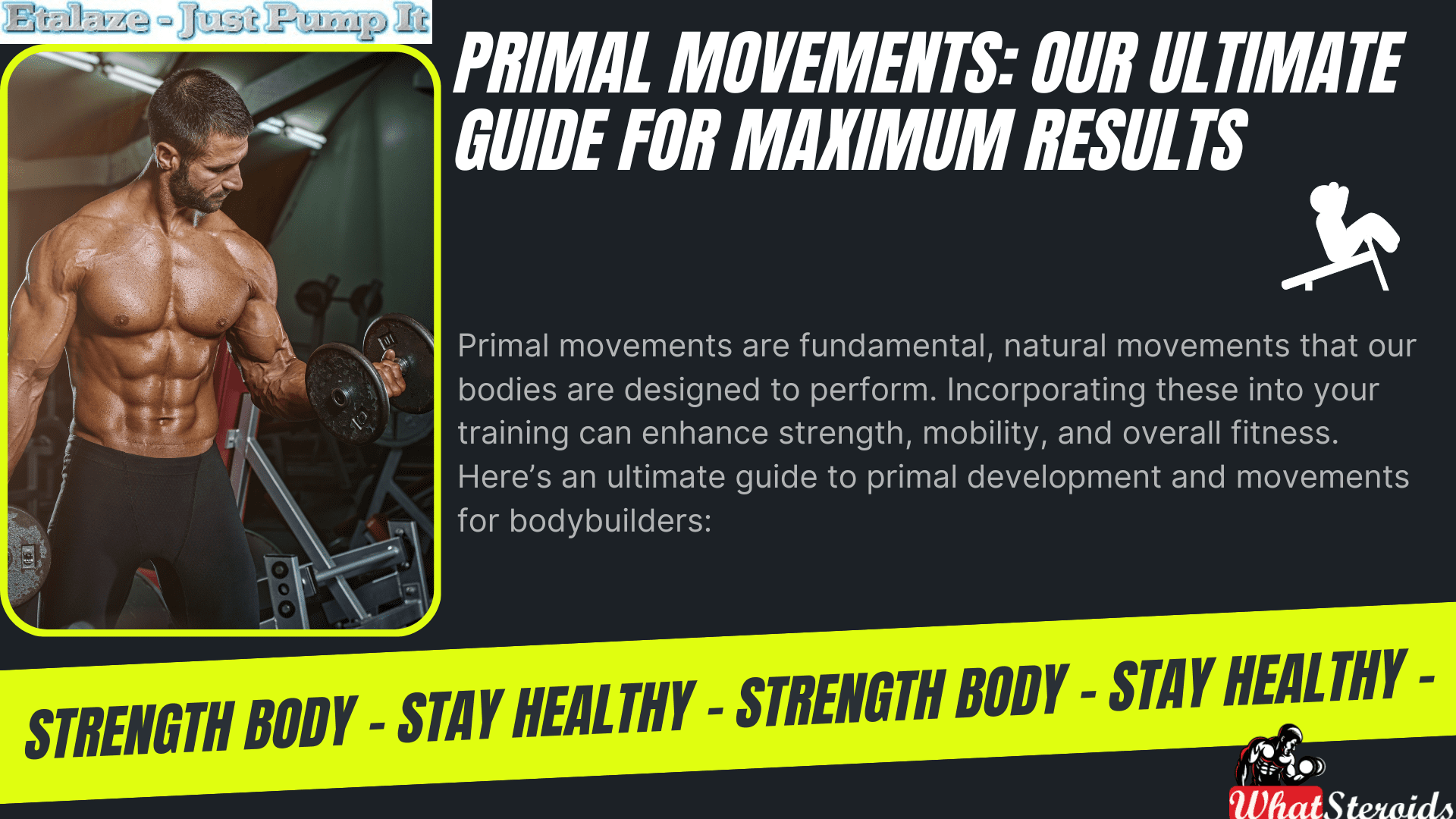
Primal movements are fundamental, natural movements that our bodies are designed to perform. Incorporating these into your training can enhance strength, mobility, and overall fitness. Here’s an ultimate guide to primal development and movements for bodybuilders:
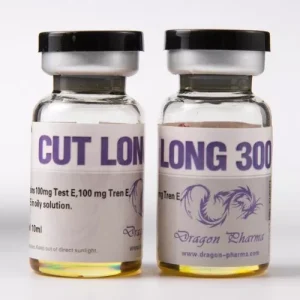 Buy Cut Long 300 by Dragon Pharma
Buy Cut Long 300 by Dragon Pharma
Understanding Primal Movements
Primal movements are basic, functional movements that mimic the natural actions humans have performed for thousands of years. These movements are essential for developing a strong, balanced, and resilient body. They can be categorized into seven primary patterns:
Related Article: How Much Do You Know About B-AET? A Fat Burner You’ve Been Missing
- Push
- Pull
- Squat
- Lunge
- Hinge
- Rotate
- Gait (Locomotion)
The Seven Primal Movement Patterns
Push
Description: Involves moving a weight or resistance away from your body.
Examples: Push-ups, bench press, overhead press.
Muscles Worked: Chest, shoulders, triceps.
Pull
Description: Involves drawing a weight or resistance towards your body.
Examples: Pull-ups, rows, bicep curls.
Muscles Worked: Back, biceps, forearms.
Squat
Description: A fundamental lower-body movement where you lower your hips from a standing position and then stand back up.
Examples: Bodyweight squats, barbell squats, goblet squats.
Muscles Worked: Quadriceps, hamstrings, glutes, calves.
Lunge
Description: A single-leg movement that involves stepping forward, backward, or to the side and lowering your hips.
Examples: Forward lunges, reverse lunges, lateral lunges.
Muscles Worked: Quadriceps, hamstrings, glutes, calves.
Hinge
Description: Involves bending at the hips while keeping a neutral spine.
Examples: Deadlifts, kettlebell swings, hip thrusts.
Muscles Worked: Hamstrings, glutes, lower back.
Rotate
Description: Involves twisting or rotating the torso.
Examples: Russian twists, woodchoppers, cable rotations.
Muscles Worked: Obliques, abdominals, lower back.
Gait (Locomotion)
Description: Involves movements that propel the body forward.
Examples: Walking, running, crawling, bear crawls.
Muscles Worked: Full body, with emphasis on legs and core.
Benefits of Primal Movements
Functional Strength: Primal movements enhance your ability to perform everyday tasks efficiently and safely.
Improved Mobility: These movements promote flexibility and range of motion, reducing the risk of injury.
Balanced Development: By working multiple muscle groups, primal movements ensure balanced muscle development.
Core Stability: Many primal movements engage the core, improving overall stability and strength.
Increased Caloric Burn: Compound movements like these burn more calories, aiding in fat loss and conditioning.
Incorporating Primal Movements into Your Training
Warm-Up: Start with dynamic stretches and light cardio to prepare your body.
Compound Exercises: Focus on compound exercises that incorporate multiple primal movements.
Progressive Overload: Gradually increase the weight or resistance to continue making gains.
Variety: Mix up your routine to prevent plateaus and keep your workouts interesting.
Recovery: Ensure adequate rest and recovery to allow your muscles to repair and grow.
Sample Primal Movement Workout
Warm-Up: 5-10 minutes of light cardio and dynamic stretching.
Workout:
Push: 3 sets of 10-12 reps of push-ups or bench press.
Pull: 3 sets of 10-12 reps of pull-ups or rows.
Squat: 3 sets of 10-12 reps of bodyweight or barbell squats.
Lunge: 3 sets of 10-12 reps per leg of forward or reverse lunges.
Hinge: 3 sets of 10-12 reps of deadlifts or kettlebell swings.
Rotate: 3 sets of 15-20 reps of Russian twists or cable rotations.
Gait: 3 sets of 30-60 seconds of bear crawls or sprints.
Cool-Down: 5-10 minutes of static stretching and deep breathing exercises.
1. Warm-Up and Mobility Drills
Start your workout with primal movement-based warm-ups to prepare your body. For example:
- Dynamic stretches: Incorporate lunges with a twist, leg swings, and arm circles.
- Mobility drills: Include exercises like hip circles, cat-cow stretches, and thoracic rotations.
2. Compound Exercises
Add primal movements as the core of your workout. Here’s how you can structure it:
- Push Day: Combine bench presses with push-ups.
- Pull Day: Mix pull-ups with rows.
- Leg Day: Integrate squats and lunges with deadlifts.
3. Supersets and Circuits
Create supersets or circuits that include primal movements:
- Superset Example: Pair squats with pull-ups or push-ups with lunges.
- Circuit Example: Rotate through exercises like kettlebell swings, bear crawls, and Russian twists with minimal rest.
4. Functional Training Days
Dedicate one or two days a week to functional training focused on primal movements:
Sample Functional Workout
-
- Warm-Up: 5 minutes of dynamic stretching.
- Circuit: 3 rounds of:
- 10 push-ups
- 10 pull-ups
- 15 squats
- 10 lunges per leg
- 15 kettlebell swings
- 20 Russian twists
- 30 seconds of bear crawls
- Cool-Down: 5 minutes of static stretching.
5. Active Recovery
Use primal movements on active recovery days to promote mobility and flexibility:
- Activities: Light yoga, walking, or gentle bodyweight exercises like lunges and squats.
6. Progressive Overload
Gradually increase the intensity of primal movements by adding weights or resistance bands:
- Example: Start with bodyweight squats, then progress to goblet squats, and eventually barbell squats.
7. Listen to Your Body
Pay attention to how your body responds to these movements and adjust accordingly:
- Modify: If a movement feels too challenging, modify it to suit your fitness level.
- Rest: Ensure you’re getting adequate rest and recovery to prevent overtraining.
Read More: Cellular Alchemy to Restore Testosterone Levels
Sample Weekly Routine for Primal Movements
Monday: Push Day
- Bench Press
- Push-Ups
- Overhead Press
Tuesday: Pull Day
- Pull-Ups
- Rows
- Bicep Curls
Wednesday: Leg Day
- Squats
- Lunges
- Deadlifts
Thursday: Functional Training
- Circuit of primal movements (as outlined above)
Friday: Active Recovery
- Light yoga or walking
Saturday: Full-Body Workout
- Combination of push, pull, squat, and hinge movements
Sunday: Rest Day
By incorporating these primal movements, you’ll enhance your functional strength, mobility, and overall fitness. If you have any specific goals or need further customization, feel free to ask! Happy training.
For optimal performance in primal movements before a bodybuilding competition, consider these supplements:
Pre-Workout Supplements: These can provide energy and enhance performance. Look for products containing creatine, nitric oxide stimulators, and caffeine.
Post-Workout Supplements: Essential for recovery, including protein powders, BCAAs (Branched-Chain Amino Acids), and multivitamins.
Fat Burners and Metabolizers: These can help in reducing body fat while maintaining muscle mass. Ingredients like green tea extract and L-carnitine are popular.
Adaptogens: Supplements like ashwagandha and rhodiola rosea can help manage stress and improve endurance.
Conlusion
Primal movements, which include squatting, lunging, hinging, twisting, walking, pushing, and pulling, benefit from a strong foundation of functional strength and mobility. Ensuring your body is well-nourished and recovered will help you perform these movements effectively.
Incorporating primal movements into your bodybuilding routine can lead to significant improvements in strength, mobility, and overall fitness. By focusing on these fundamental patterns, you can build a well-rounded, resilient body that performs well both in and out of the gym.
-

 Steroids2 years ago
Steroids2 years agoShavers and Other Body Grooming Equipment for Bodybuilders In 2023
-

 Steroids2 years ago
Steroids2 years agoChatGPT and Other Avenues to Find Great Bodybuilding Coaches
-

 Steroids2 years ago
Steroids2 years agoBest Oil Recommendations Before Competition for Subtle Shimmer
-

 Steroids2 years ago
Steroids2 years agoPowerlifting Vs Power Building: Find Out the Big Difference and When to Shift Between the Two
-

 Nutrition2 years ago
Nutrition2 years agoEverything Nutritional Food: What’s Too Much Or Too Little
-

 Bodybuilding Products1 year ago
Bodybuilding Products1 year agoTelmisartan In Bodybuilding: An Expert’s Advice
-

 Bodybuilding8 months ago
Bodybuilding8 months agoPrimal Movements: Our Ultimate Guide for Maximum Results
-

 Bodybuilding1 year ago
Bodybuilding1 year agoChia Seeds in A Bodybuilder’s Diet: An Expert’s Advice
-

 Anabolic Steroids10 months ago
Anabolic Steroids10 months agoJoint Stiffness: How to Manage It While on AAS
-

 Anabolic Steroids1 year ago
Anabolic Steroids1 year agoLegality of Anabolic Steroids In Latin America
-

 Steroids1 year ago
Steroids1 year agoAnadrol Cycle: Benefits, Doses, Alternatives, etc.
-

 Beginners2 years ago
Beginners2 years agoTren Cycle for Beginners
-

 Bodybuilding9 months ago
Bodybuilding9 months agoHow Effective is Bone Broth for Recovery?
-

 Steroids10 months ago
Steroids10 months agoOmnitope (Oxytocin)
-

 Bodybuilding1 year ago
Bodybuilding1 year agoHow Much Is Too Much Cardio? Understanding Heart Rate Zones
-

 Bodybuilding1 year ago
Bodybuilding1 year agoList of FDA-Approved Peptides
-

 Steroids9 months ago
Steroids9 months agoSleeping Positions for Effective Muscle Recovery
-

 Bodybuilding2 years ago
Bodybuilding2 years agoCompetition Prep Cycle for Pro Bodybuilders
-

 Bodybuilding1 year ago
Bodybuilding1 year agoCalorie Dumping: A Bodybuilder’s Guide
-

 Bodybuilding8 months ago
Bodybuilding8 months ago2nd Edition of Natural Bodybuilding Competition Facts
-

 Bodybuilding1 year ago
Bodybuilding1 year agoDemystifying Hypertrophy Training
-

 Bodybuilding9 months ago
Bodybuilding9 months agoAre Nootropics a Better Option to AAS?
-

 Anabolic Steroids12 months ago
Anabolic Steroids12 months agoHow Much Do You Know About B-AET? A Fat Burner You’ve Been Missing
-

 Steroids4 months ago
Steroids4 months agoOstarine For Beginners: The Ultimate Guide
-

 Product Reviews12 months ago
Product Reviews12 months agoTop Vitamins for Skin Health


